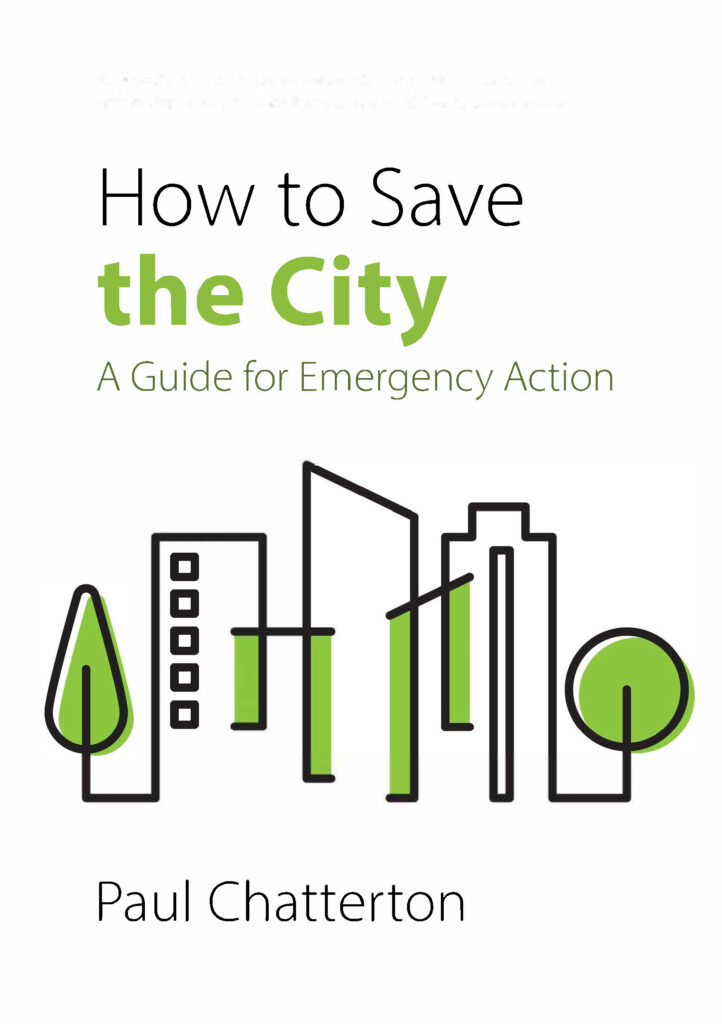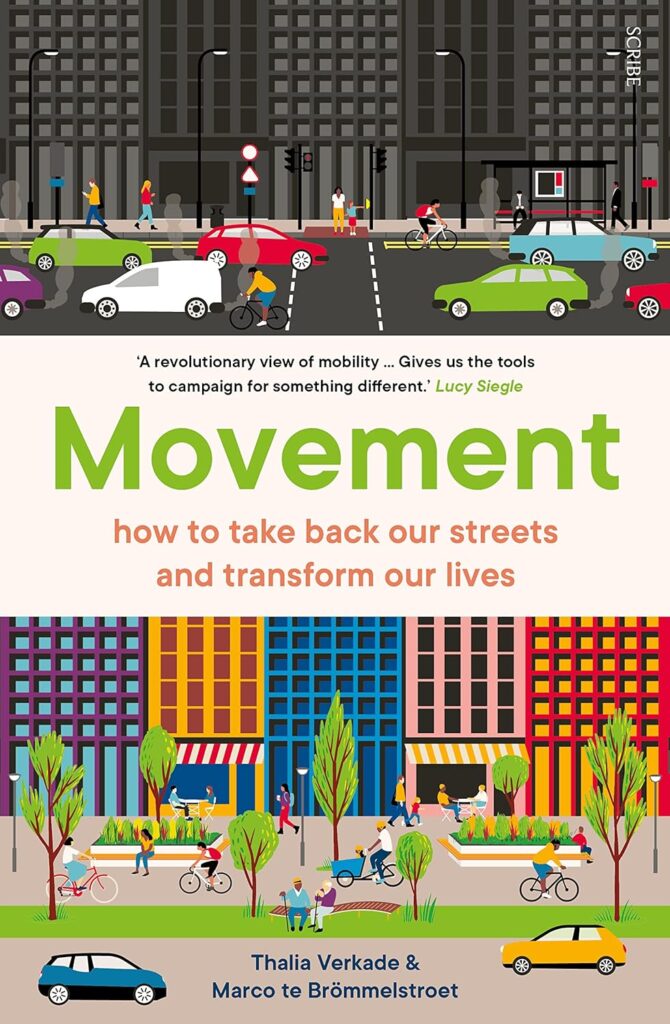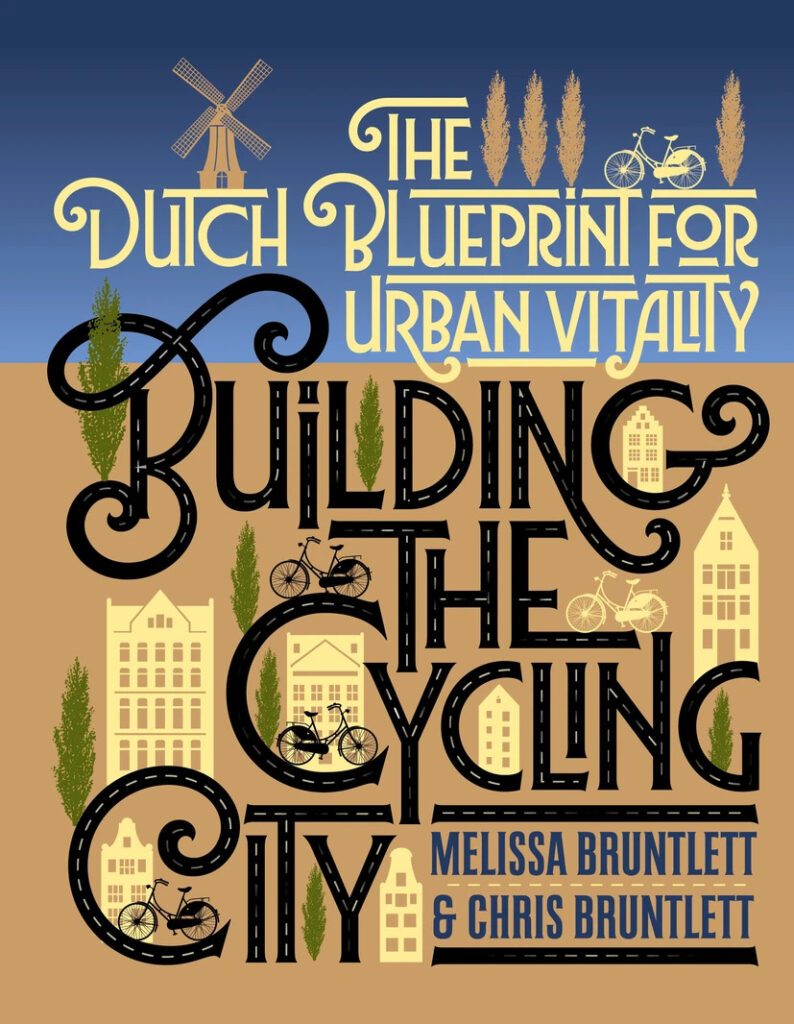
The following post is the accepted version of the book review by Meredith Glaser and Kevin Krizek published in the academic journal Transport Reviews:
What is it about?
To Copenhagenize or bust; is there no in-between? New mobility innovations are shuddering shockwaves through transport practices in cities worldwide, compelling planners and elected officials to reconsider fundamental questions about how people get around town. Pressing issues, particularly those centred on short-distance travel, include which transport mode to prioritise, where, and why? This changing landscape is prompting those who work on transport issues to seek new knowledge, explanations and solutions – oftentimes, from elsewhere in the world – to ease doubts, build confidence, and legitimize potential pathways to achieving “sustainable mobility”.
Reassurances are welcome in these uncertain times and Mikael Colville-Andersen aims to provide such in his newest title, Copenhagenize: the Definitive Guide to Global Bicycle Urbanism. From the outset, his perspective is crystal clear: reallocating road space for “best practice” bicycle infrastructure is the key to growing cycling as a mainstream mode of transport. In over twenty bite-size chapters, Colville-Andersen brings admirable breadth and swagger to reinstate the bicycle and “gold standard” infrastructure into modern urban cultural and spatial landscapes.
The first section underscores the role of the bicycle in creating “life-sized cities” – urban places and streets built on the human perspective. He laments how most city streets, once places for play, social interaction, and commerce, were “buried” and “paved over with asphalt” for a single, “flawed” form of transport: the automobile. Joining the ranks of many, he forcefully articulates frustration with the “dictatorship” of car-dominated planning and how public officials persist in subscribing to outdated, 1950’s standards. He denounces victim-blaming communication techniques of traffic safety organisations, school crossing guards, and safety campaigns, arguing responsibility be placed on the “heavy hitters of the traffic equation” (cars). He campaigns for strict liability laws and lowering speed limits to 30 km/h (19 mph).
The second section (“The Learning Curve”) deepens one’s appreciation for the bicycle: an elegant piece of machinery and compelling mobility solution for cities. Here, Copenhagen is the protagonist. He traces initial public outcry, responses to the oil crises, and initiatives supporting bicycles, describing that, through persistent efforts in the 1990s, a network of protected bicycle infrastructure on the city’s main arterials neared completion. Concomitant with rising cycling rates, this sets up the evidence base of a possible transformation from a “car-clogged” city through the 1960s to achieving almost two-thirds of commute trips by bike (2016). Full of whit, he offers arguments to bust “tired, uninformed” myths such as weather, topography, a culture of driving cars, a lack of space, and urban sprawl – each of which, in his experience, offer weak excuses for cities not to act (read: build bike infrastructure).
The last section, “The Toolbox”, recounts the challenges of reconciling emerging guidelines, and Colville-Andersen adamantly offers the Danish “tried-and-tested” design standards as testimony (pp. 176–177) that will unquestionably fit any street in the world. One short chapter indiscriminately catalogues a number of ways to prioritise cycling, from engaging political leaders to the importance of bike facility maintenance and safe intersection design. Rather paradoxical to previous anti-engineering arguments, Chapter 17 offers cycling-orientated traffic engineering “innovations” that increase efficiency and through-put for cyclists, such as The Green Wave and countdown clocks. The last chapter is a passionate plea about the value of curating transferable ideas and suggests more detailed perspectives for those who would like to join the cause.
What approach does it take?
Among the burgeoning list of other books addressing bicycling released in the past few years, Copenhagenize separates itself in two respects. First, Colville-Andersen offers his bicycle-centred orthodoxy as resolute. His future view of urban transport has one pathway: more cycling. By heeding this mantra, urban problems resolve naturally because, “no other product in human history has positively transformed society as quickly and effectively as the bicycle did”. Statements are so forcefully shot through the prism of his own Ray-Bans that counter arguments are simply snuffed. By subscribing to the book’s hope, “to simplify a subject that has been needlessly overcomplicated”, planners and local officials can spur cycling’s return “to the urban pedestal that it deserves” (p. 274). “Infrastructure is the key” (p. 98) to achieve this, as is getting “visionary” political leaders on-board. Some readers might yearn for new insights on how to engage with this surely iterative process or where to start. Although he acknowledges that “politics is complex” (199), we are left to unpack that complexity ourselves.
Second, Colville-Andersen eases access to his perspectives with adroit literary devices. Some text resembles transcripts from his brilliant keynotes, leaving the impression he is telling a story (e.g. “[this] boulevard ain’t no fairytale, sunshine” to “we would all collectively throw up in our mouths” and “I have a friend who has a drinking bike”). On top of the book’s superior layout – vivid photos and schematics – the vibrancy of his arguments come to light through many metaphors (e.g. pinning NACTO against AASHTO like the ballet dancer versus the sumo wrestler, see p. 185) and storytelling, both at which he excels. Such access comes with at least two costs: verbosity and verifiability. In a field perennially powered by research, some readers might appreciate at least a nod to available and burgeoning science.
Comparing the impressive range of topics contained in this volume to its title – being definitive – left us curious: Is the book definitive about the entire gamut of bicycle urbanism? Or, within a select range of issues about bicycle urbanism, is the aim to be definitive? We conclude the latter because, for example, scant attention is devoted to bicycle-transit integration, urban design in general, or land use planning (access to a grocery store is mentioned once). Furthermore, the ideology is largely premised on using streets as thoroughfares for movement. We see a missed opportunity to help professionals develop a new breed of urban street that cherishes the bike, but also prizes social interaction, commerce and play. We sought insights to ease the policy learning process by which policies and approaches could be shuttled from one planning culture to another. Building a bicycling network for Almetyevsk, Russia, was inspiring, but left us questioning how and why this case could apply to other contexts. Chapter 19 (“Curating Transferable Ideas”) surely seemed to assuage this topic, but instead the reader finds a discussion of kickstands, bike racks, and bicycle insurance.
Colville-Andersen is a brilliant salesperson who weaves a quarter-century of thought about cycling with the changing needs of cities. We respect his drive to provide cycling as the answer to many urban woes. We, too, see that change is needed and share sentiments for bicycling’s potential. We see a future where building consensus, learning new skills, experimenting, and taking bold risks in the face of resistance will inevitably be a part of creating a new normal. Some confusion might result and could be expected. Amsterdam has been evolving their streets for half a century to better accommodate people on bicycles – apparently Dutch bike facilities are “not very uniform or intuitive” (p. 243). According to the author’s children, this is problematic. Copenhagen, on the other hand, supposedly has it all figured out.



